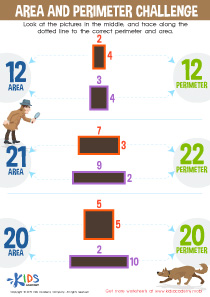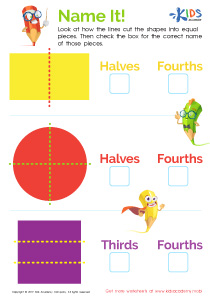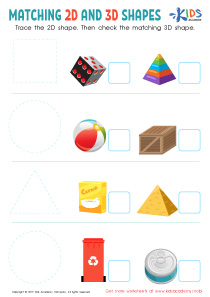Critical Thinking 2D Shapes Worksheets for Ages 5-8
5 filtered results
-
From - To
Enhance your child's critical thinking skills with our thoughtfully designed 2D Shapes Worksheets for ages 5-8. These worksheets help young learners effectively grasp fundamental geometric concepts while promoting problem-solving and analytical thinking. Through engaging activities, children identify, compare, and analyze various 2D shapes such as circles, squares, triangles, and rectangles. Each exercise encourages logical reasoning and spatial awareness, key components of cognitive development. With vibrant visuals and fun tasks, these printable resources make learning interactive and enjoyable. Empower your child to excel in math and critical thinking with our superb 2D Shapes Worksheets!
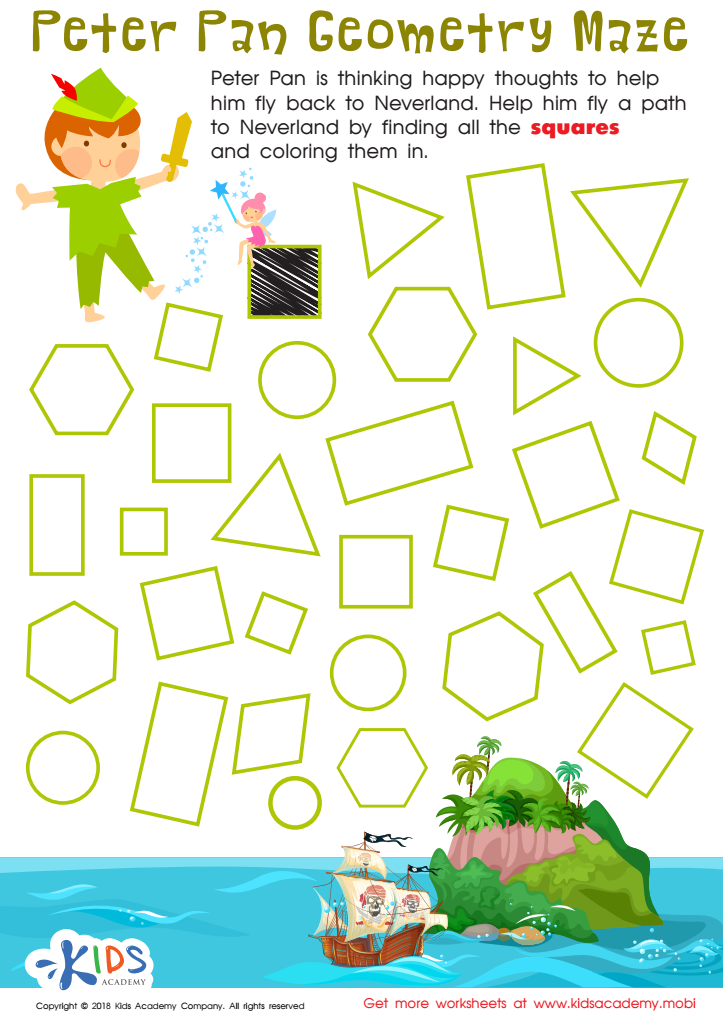

Peter Pan Worksheet
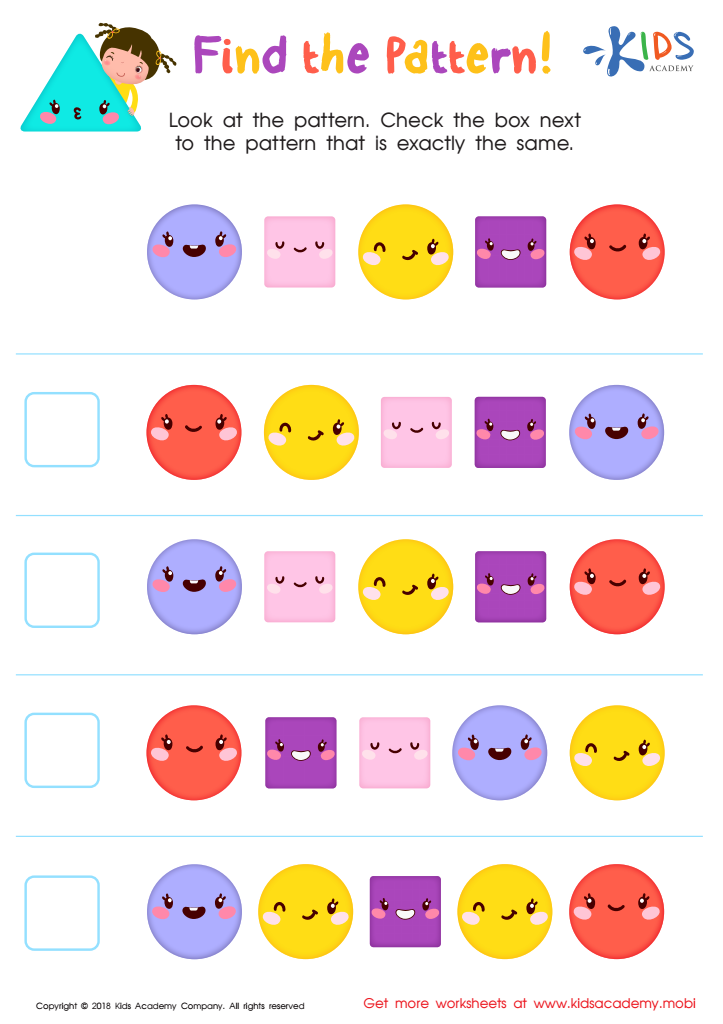

Find the Pattern Worksheet
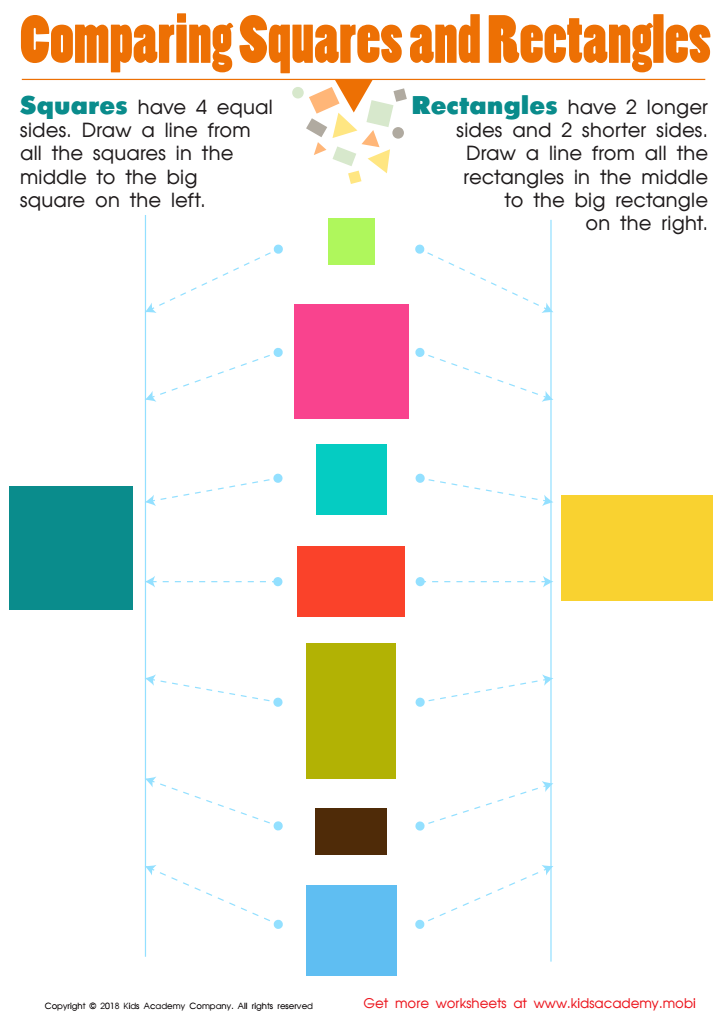

Comparing Squares Rectangles Worksheet
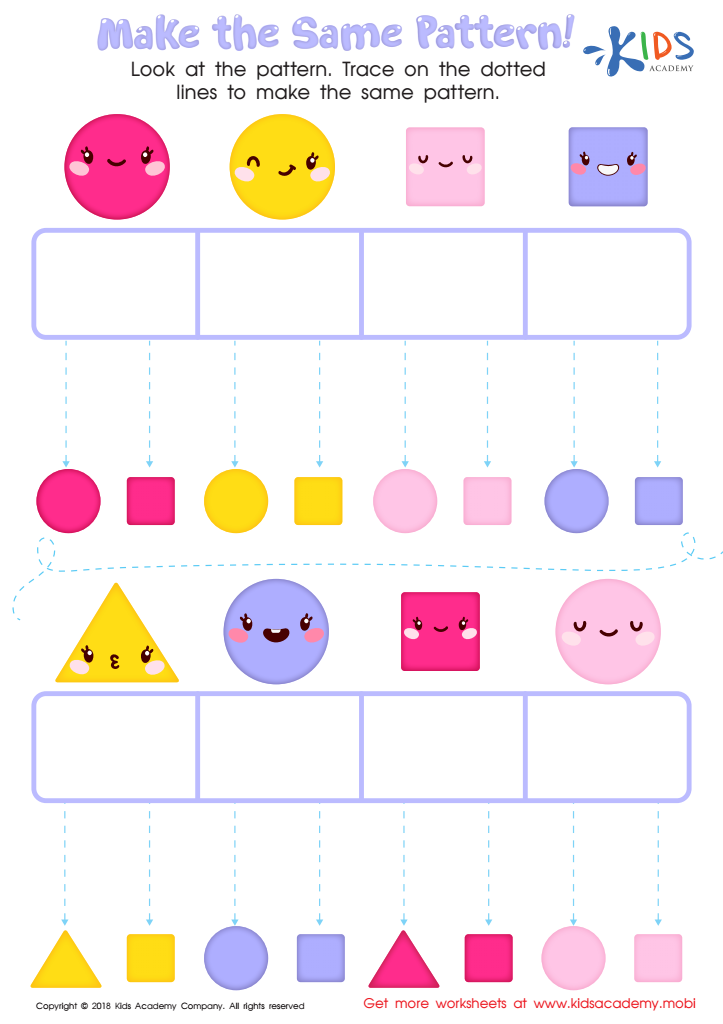

Make the Same Pattern Worksheet


Using Squares to Make Rectangles Worksheet
Encouraging critical thinking through 2D shapes for children ages 5-8 lays an essential foundation for their cognitive and academic development. At this formative stage, activities involving identification, classification, and comparison of shapes extend beyond simple recognition— they cultivate refined analytical skills and spatial awareness.
Firstly, understanding 2D shapes enriches mathematical skills. Recognizing shapes, counting sides, and comparing sizes ties directly into early geometry, which is a fundamental component of early math education. Critical thinking skills like reasoning and problem-solving enhance their ability to tackle more complex math problems later on.
Secondly, these activities stimulate cognitive functions such as observation, memory, and attention to detail. As children engage in identifying differences and similarities between shapes, they’re honing their observation and analytical skills.
Moreover, these exercises encourage creativity and patience. By exploring how different shapes can combine to form new images or patterns, children practice imaginative thinking, an important aspect of innovation and problem-solving in any field.
Lastly, these foundational experiences foster confidence and curiosity. When children successfully navigate shape-based challenges, they gain a sense of accomplishment, bolstering their confidence and willingness to engage in new learning experiences.
Thus, focusing on critical thinking with 2D shapes is integral in nurturing well-rounded, inquisitive learners who feel both capable and excited about their educational journey.
 Assign to My Students
Assign to My Students













